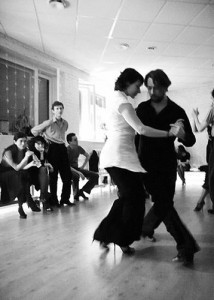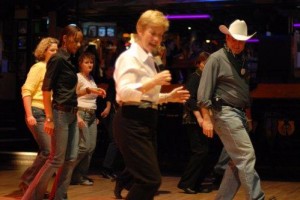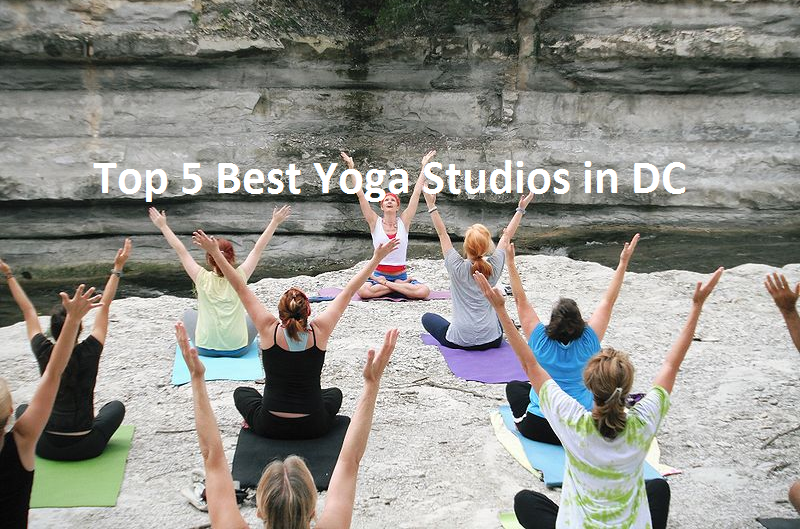June 1, 2011
Tracey L. Chavous
Health and Wellness Writer
Healthy Living
 Most people are aware that some form of daily exercise is beneficial for their overall health and well-being. However, many fail to get that exercise for one reason or another. Some feel they have no time; others can not stand the boring machines at their gym or can not afford a pricey gym membership at all. Those who choose not to actively pursue structured exercise can still find out how many calories they are burning when doing simple things like chores, errands or even just standing around. Yet many people would probably be surprised to learn that dancing can burn anywhere from 300-700 calories per hour.
Most people are aware that some form of daily exercise is beneficial for their overall health and well-being. However, many fail to get that exercise for one reason or another. Some feel they have no time; others can not stand the boring machines at their gym or can not afford a pricey gym membership at all. Those who choose not to actively pursue structured exercise can still find out how many calories they are burning when doing simple things like chores, errands or even just standing around. Yet many people would probably be surprised to learn that dancing can burn anywhere from 300-700 calories per hour.
Jaana Kunitz, an award-winning ballroom dancer, performer and  choreographer, is one of the most televised professional female dancers in the world. She says, “Your feet are stomping, your arms are pumping and your hips are shaking, creating a full body workout. Physiologically, dance increases your heart rate and blood flow, not only helping cardiovascular health, but also burning fat. Dancing can actually burn as many, if not more, calories as other more traditional exercises like running, lifting weights or aerobics.” But it’s not just about burning calories and fat. The repetitive movements of dance naturally strengthen and tone muscles, translating to both a slimmer and more taut physique, says Kunitz. It helps to establish self-confidence and self-discipline. It also improves the harmony between the mind and body, providing a general sense of well-being.
choreographer, is one of the most televised professional female dancers in the world. She says, “Your feet are stomping, your arms are pumping and your hips are shaking, creating a full body workout. Physiologically, dance increases your heart rate and blood flow, not only helping cardiovascular health, but also burning fat. Dancing can actually burn as many, if not more, calories as other more traditional exercises like running, lifting weights or aerobics.” But it’s not just about burning calories and fat. The repetitive movements of dance naturally strengthen and tone muscles, translating to both a slimmer and more taut physique, says Kunitz. It helps to establish self-confidence and self-discipline. It also improves the harmony between the mind and body, providing a general sense of well-being.
In the last few years, there has been nothing short of a dance craze on major  television networks. Shows from “Dancing with the Stars,” to “America’s Best Dance Crew,” to “So You Think You Can Dance?” have been a huge hit with audiences and critics alike. Many of these shows have inspired people to put on their own dancing shoes and take some classes. Additionally, exercise routines like Zumba, Jazzercise, Line Dancing and Cardio Hip Hop have provided an upbeat way to help dancers
television networks. Shows from “Dancing with the Stars,” to “America’s Best Dance Crew,” to “So You Think You Can Dance?” have been a huge hit with audiences and critics alike. Many of these shows have inspired people to put on their own dancing shoes and take some classes. Additionally, exercise routines like Zumba, Jazzercise, Line Dancing and Cardio Hip Hop have provided an upbeat way to help dancers of all skill levels get fit in a more exciting, heart-pumping way. Many health clubs now offer these classes, while the Wii and the Xbox Kinect have “Dance, Dance Revolution,” a game that lets novice dancers practice in virtual reality until they are ready to show the world their new moves.
of all skill levels get fit in a more exciting, heart-pumping way. Many health clubs now offer these classes, while the Wii and the Xbox Kinect have “Dance, Dance Revolution,” a game that lets novice dancers practice in virtual reality until they are ready to show the world their new moves.
Who needs a nightclub when there is unlimited music to choose from on iPods and MP3 players? There is really almost no excuse not to be dancing these days. Even First Lady Michelle Obama danced recently to Beyonce’s “Move Your Body,” while her mastery of the “Dougie” dance further demonstrated how easy it is for  young teens to get fit by doing some popular moves on a regular basis. An additional bonus of the access to video games and extensive digital music libraries at home is that dancing can be done with family members and friends as a way to encourage a better lifestyle of health and wellness. It can be especially beneficial to fight off the doldrums on cold or rainy days when families are cooped up indoors. Even teachers can turn the music on in school during those gloomy indoor recess sessions when students have few opportunities to move around.
young teens to get fit by doing some popular moves on a regular basis. An additional bonus of the access to video games and extensive digital music libraries at home is that dancing can be done with family members and friends as a way to encourage a better lifestyle of health and wellness. It can be especially beneficial to fight off the doldrums on cold or rainy days when families are cooped up indoors. Even teachers can turn the music on in school during those gloomy indoor recess sessions when students have few opportunities to move around.
According to an article at AARP.com, whether it is ballet or ballroom, clogging or jazz, dance is a great way for people of all ages and physical abilities get and stay in shape. There is even chair dancing for those with physical limitations. A 150-pound adult can burn about 150 calories doing 30 minutes of moderate social dancing.
In addition, dancing can:
- Strengthen bones and muscles without hurting joints
- Tone the entire body
- Improve posture and balance, which can prevent falls
- Increase stamina and flexibility
- Reduce stress and tension
- Build confidence
- Provide opportunities to meet new people
- Ward off illnesses like diabetes, high blood pressure, heart disease, osteoporosis and depression
It can even elevate mood by raising endorphin levels. This relieves stress and depression, two of the immune system’s worst enemies. Dancing helps establish self-confidence and self-discipline. It improves the harmony between mind and body, giving individuals a sense of wellness.
For those who are not sure what type of dancing they want to try, the best thing to do is experiment. When taking a class, be sure to give it a fair trial before deciding to quit, recommends Colleen Dean, Program Coordinator for the American Alliance for Health, Physical Education, Recreation and Dance. Try going with a friend and stick with it for at least a month. Dance classes open to the public can typically be found at dance schools, dance studios, in health clubs or even at a local community recreation center. Some YMCAs, churches and synagogues offer group dance classes followed by a time for socializing and refreshments.
Some forms of dance that might be worth exploring:
- Square dancing
- Swing (traditional or West Coast)
- Line dancing to country, rock, pop, R& B or salsa music
- Folk dancing (great for reconnecting with ethnic roots or learning about a whole new culture)
- Ballroom
- Belly dancing
- Salsa
- Flamenco
- Jazz
- Tap
- Modern
- Clogging (double-time stomping and tap steps)
- Contra
- Hip-hop
- Cardio-dancing
For those who are tired of the treadmill, but still want a fun way to stay fit and healthy, now might just be the perfect to let it all go and dance to the music!



